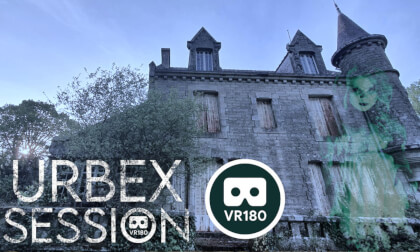New: AI passthrough!
This amazing Deo feature uses the power of AI to turn every VR scene into AR passthrough! Now you can take characters out of VR and have them right there with you - as if they were in the same room.
Notice: AI Passthrough is presently in beta mode, and as such, users may encounter occasional service imperfections. The feature is currently exclusive to the DeoVR app, but it will soon be accessible on both browsers and mobile devices. Your feedback is highly encouraged and appreciated.
Recommended headsets:
Meta Quest 3, and Quest Pro with stereoscopic color passthrough, Pico 4 (monoscopic color passthrough).
Compatible headsets:
Quest 2, Valve Index (monoscopic black and white passthrough).
Passthrough is not compatible yet for Oculus Link cable.
Check out our complete guide to passthrough and join in the discussion at our busy forum.
Windbergbahn Gittersee
On the city border with the Saxon state capital Dresden, the Windbergbahn line winds its way up from Plauenschen Grund to Dresden-Gittersee at a steady incline. It was built in 1856 as the Hänichen coal branch line by Albertsbahn AG to develop the surrounding coal mines.
Due to the route with numerous curves of less than 200 meters in radius, the standard gauge railway line is considered the oldest mountain railway in Germany and the second oldest mountain railway in Europe (after the Semmering Railway in Austria, completed in 1854). The railway line owes its nickname "Saxon Semmering Railway" to the Saxon King Johann. From 1907, the railway line, which was extended to Possendorf in 1908 and branched off to various mines, was used for public passenger and freight transport. The so-called "Windbergbahn" and "Possendorfer Heddel" became particularly popular because of the beautiful views.
After passenger traffic was stopped in 1957, attempts were made to erase the Windbergbahn from memory because the freight trains were used to transport uranium ore. On the initiative of local historians and railway enthusiasts, the Windbergbahn was declared a technical monument in 1980. In the same year, the "Windbergbahn" AG was founded in the GDR model railway association. After 1990, this AG became the Saxon Museum Railway Association Windbergbahn e. V.





























